
A tour of the Sacred Valley is an essential part of your exploration of the Inca Heartland in Peru. Indeed there are many ruins to visit and mountainsides to trek, but one intriguing sight not to be missed are the ancient salt pans, known as the Maras Salt Mines, or Salineras de Maras.
Strategically dug into the mountainside, thousands of shallow pools filled with salt water. Eventually, they evaporate and leave behind crystallized salt. These salt pans have been in operation for more than 500 years. To this day, they are mined by local families for their special, beloved Peruvian pink salt.
Disclaimer: Peru has limited tourist access to the Maras salt pans. As of June 15, 2019, tourists are banned from entering the crystallized pond area due to contaminants found in the salt. Tourists will still be able to learn about the salt pans with a guide, and be taken to spectacular viewpoints. More information on this restriction can be found here.
This article was last updated by Gina Cronin in March, 2020
You might be wondering how large amounts of salt deposits ended up in the middle of the Andes Mountains. Though the salt pans themselves are man-made, the water that is channeled through them comes from a subterranean natural spring, which is mixed with salt deposits from prehistoric salt lakes. Over millions of years, tectonic plate movement has buried the deposits deep beneath the mountains: the salt is accessible from an underground water flow of brine – a mixture of salt and water – that bubbles up in a natural spring near the small town of Maras.
Sacred Valley Tours:
It’s believed that the salt pans were originally constructed by the Wari civilization, which predates the Inca. However, the Inca saw the economic opportunity in harvesting the salt of Maras and expanded the salt pans further up the mountainside.
The salt is mined through the evaporation of the brine that is channeled into the pans. When the water evaporates, members of the local communities carefully scrape the salt crystals from the earthen surfaces. When all of the crystals are removed, the pan is filled with the salt water again – a process that has been practiced since before the time of the Inca.
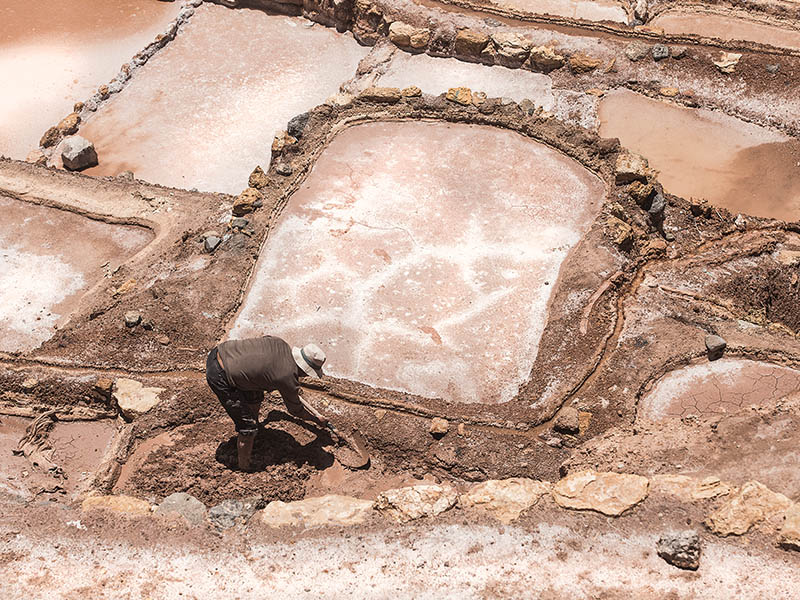
The salt crystals are carefully scraped from the sides of the pools as the brine evaporates.
The local community has exclusive mining rights to the salt pans near Maras.
Today there are over 6,000 salt pans near Maras, and each one is no more than 13 square feet and less than 1 foot deep. Each pan is owned and mined by a local family of the Maras community, and the salt is collected and sold in local shops or nearby towns.
The salt pans are also an interesting attraction for people visiting the Sacred Valley on the way to Machu Picchu. Travelers can explore the salt pans on a guided tour and see captivating vistas and access points of the site for 10 soles (about $3) entrance fee. Afterward, you can buy some of the Andean salt as a souvenir.
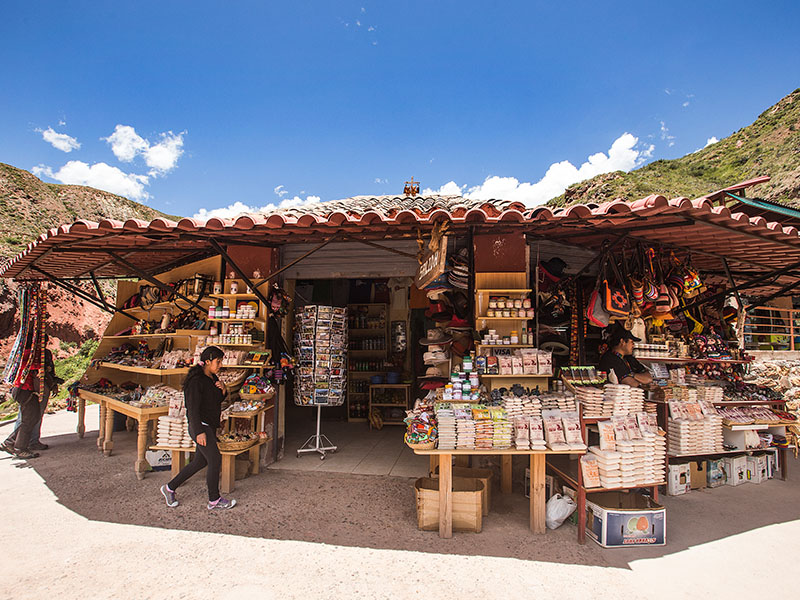
Peruvian pink salt makes a great souvenir. Check out the market stalls near the site.
Peruvian pink salt is hand-harvested from the magnificent salt ponds of Maras. Local families mine and sell the salt to local markets and at the site to the many visitors who pass through each day. The salt itself has a beautiful pale pink color, and is coarse and uneven in texture. It has a more mild, complex flavor than table salt, and is the perfect addition to any culinary creation. Use it to season meats, veggies, and potatoes!
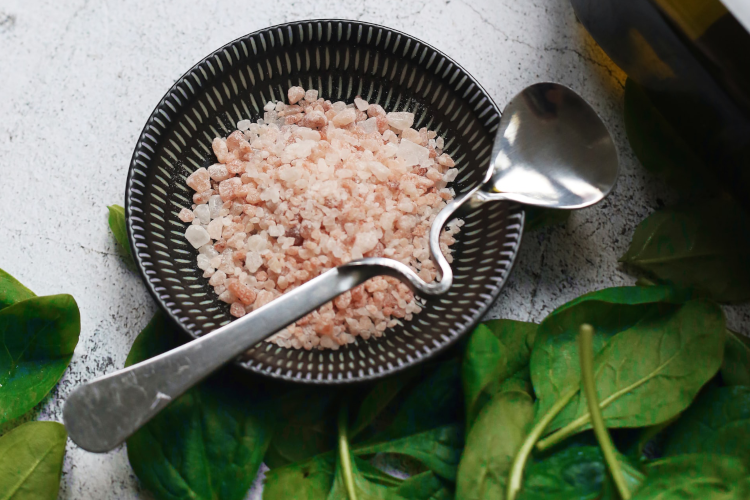
Not only is it pretty, Peruvian pink salt has added wellness benefits too.
First, remember that you can add the Maras salt mines to any of our Peru packages and Machu Picchu tours, in which you would be picked up directly from your Cusco hotel for your salty adventure. The salt mines are about 30 miles from the Plaza de Armas of Cusco, and take a little over an hour to get to. After a fascinating tour with an expert local tour guide, you would be dropped back to your Cusco hotel or, if moving on, your Sacred Valley hotel. A pre-organized tour is definitely the easiest and most popular method of reaching the salt mines.
If you’re looking for an adventure, and would prefer to get there the locals’ way from Cusco, hit the public transportation. First, take a bus, combi (shared public shuttle van), or colectivo (shared public taxi) toward Urubamba. Let the driver know you are getting off at Maras. Once in Maras, you can either walk an hour to the salt pans, or hire a taxi (approx. 10 minutes) to take you the rest of the way.
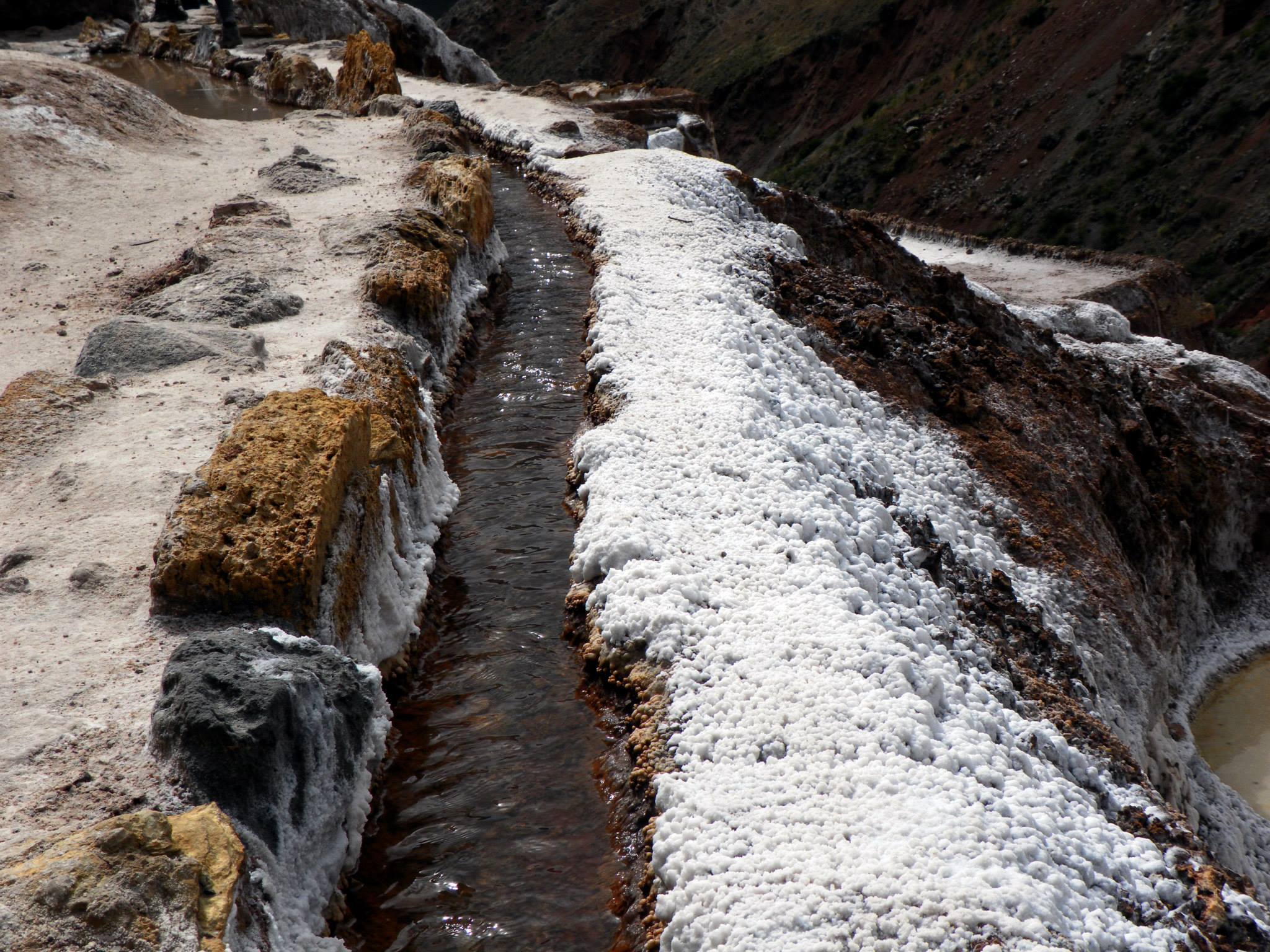
Water running through the salt pans. Photo by Angela Cronin.
Time of year. The best time to visit the Maras salt mines is during the dry season, between May and October. Conveniently, this is also the best time to visit Machu Picchu and the entire Cusco region. The dry season means nicer weather and prettier colors. During the wet season (December-March), the salt is more brownish in color, whereas as when the dry months (May-September) roll in the sun evaporates the water and that bright snowy color comes through. The dry season also makes for better weather for horseback riding, ATV-ing or hiking around the site.
Time of day. The hours of the the Maras salt mines are 8 a.m. to 5 p.m. If you want to avoid crowds, get there when it opens. Most groups don’t start piling in until around 9:30-10 a.m. However, if you’re looking for that perfect photo, photographers would argue that the later afternoon when the light is more balanced is the best time to snap a photo that captures the unique colors of the mines. No matter what time you go, you’re bound to have an intriguing experience, and can always find peaceful pockets away from the crowd.
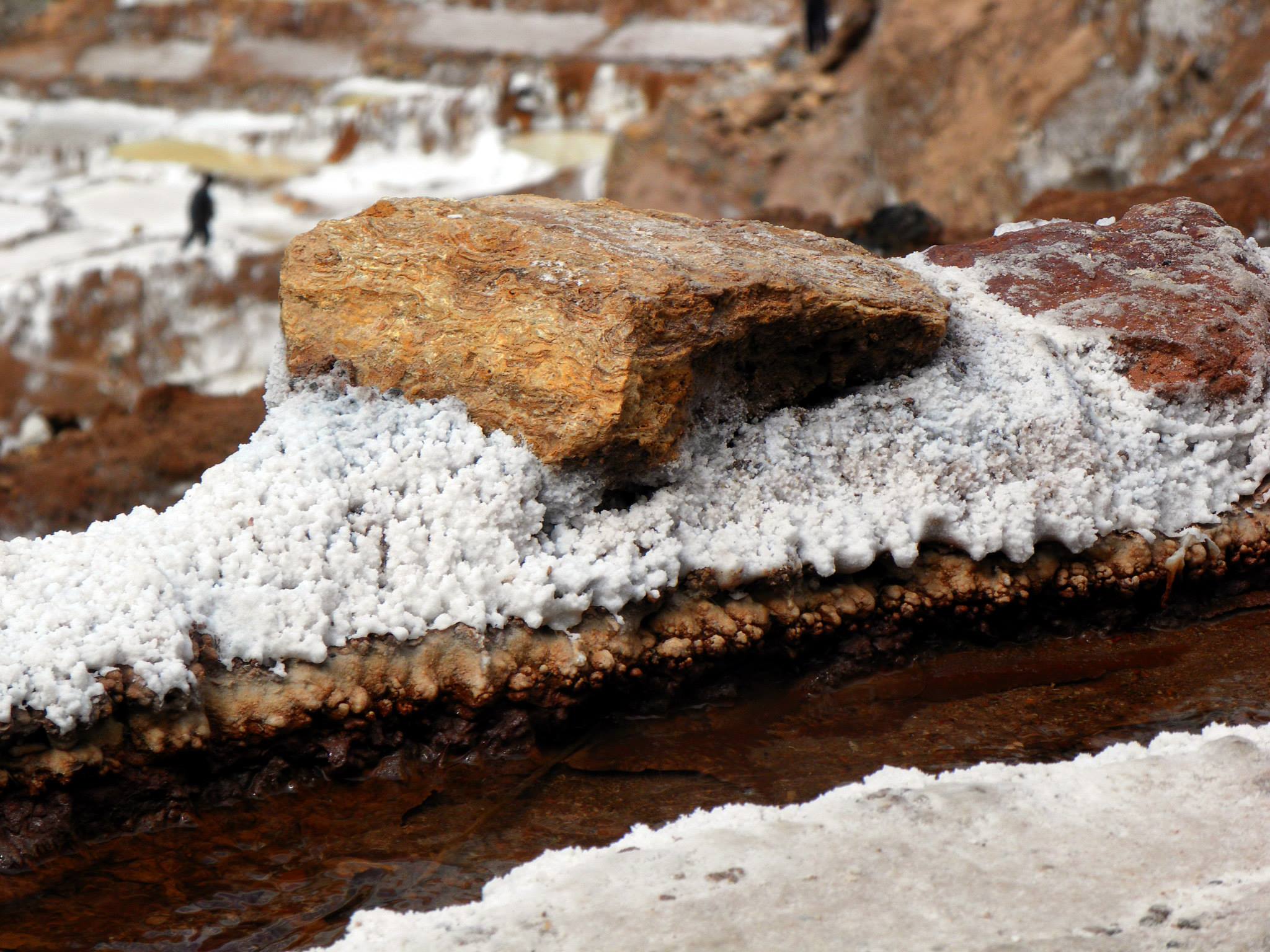
Close up of salt crystals. Photo by Angela Cronin.
There are many ways to experience the majestic salt pans of Maras. Whether you want to go at a leisurely pace with an expert guide or zoom across the surroundings by ATV, there’s a tour waiting for you.
You can take a general walking tour of the site either in private or in a group with an expert guide. Savor the unique beauty of the Andean landscapes and enjoy plenty of photo opportunities. Many Maras tours also include the Moray archaeological site, where you can see the mystical circular ruins that were once used by the Inca as an agricultural laboratory.
For a touch of adventure, hop on a 4-wheel ATV (quad bike) and zoom through the Andean countryside. Make stops at the Maras salt pans and the Moray archaeological site. Security briefing included at the start of the tour.
Trot, prance, and gallop by horseback through the picture perfect scenery of the Sacred Valley. You’ll make a stop at many scenic viewpoints, with the highlight being the otherworldly Maras salt pans.
The dirt trails traversing the open landscapes of the Sacred Valley are an outdoor lover’s dream. One of the most exciting routes goes to Maras and Moray. The first stop is Moray followed shortly after by Maras.
There’s nothing quite like traversing the valley by foot – taking in the sights, discovering little known gems, and getting some cardio all at the same time. A half day hike makes stops at the Moray archaeological site and the ancient Inca Maras salt ponds.
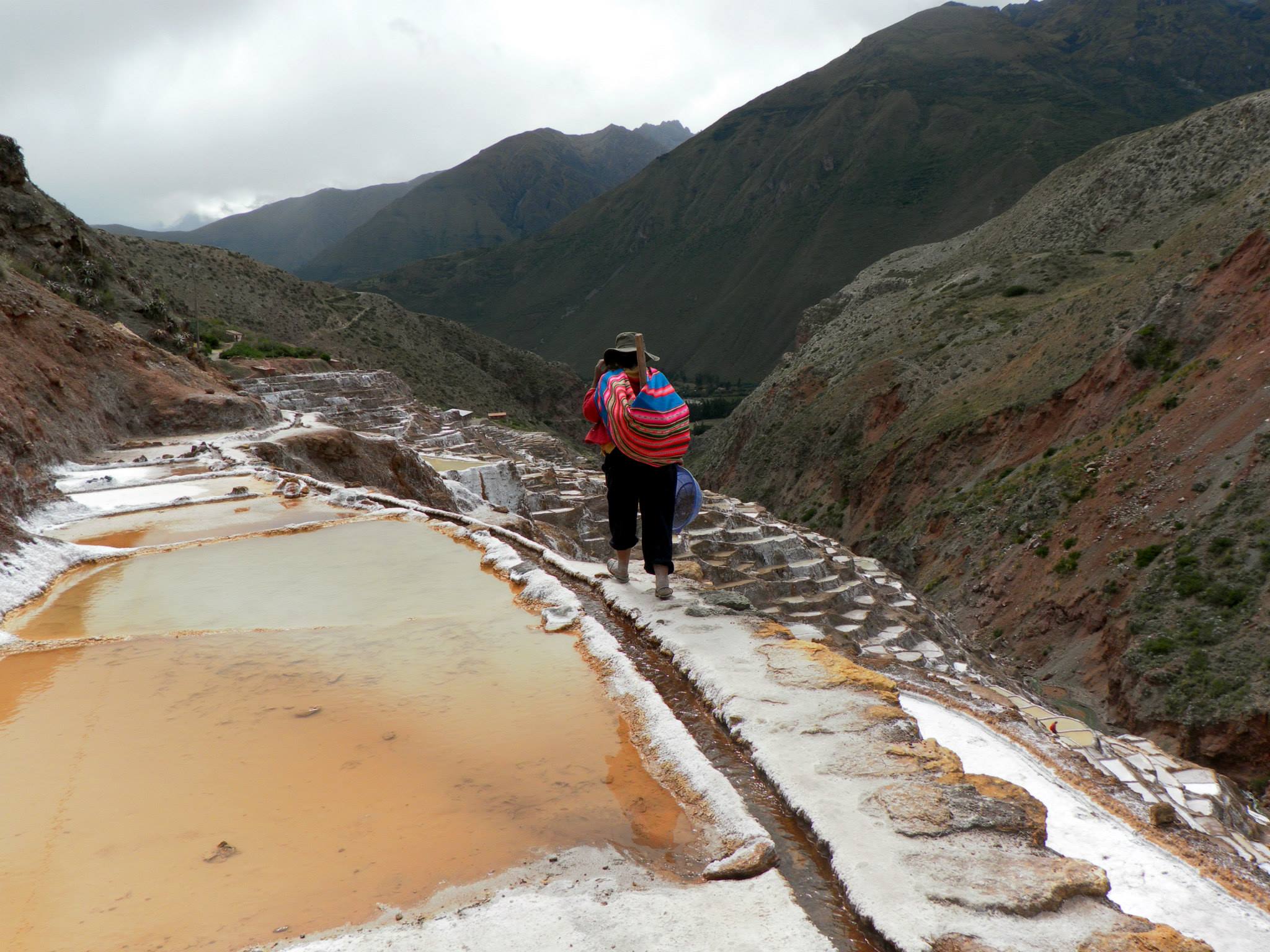
Local to the area setting up for a day’s work in the Maras salt pans. Photo by Angela Cronin.
Plan a visit to Maras during your exploration of the Sacred Valley. Don’t hesitate to contact us!



Email: [email protected]
Sign up to receive our newsletter for great articles, stunning photos, and special deals.